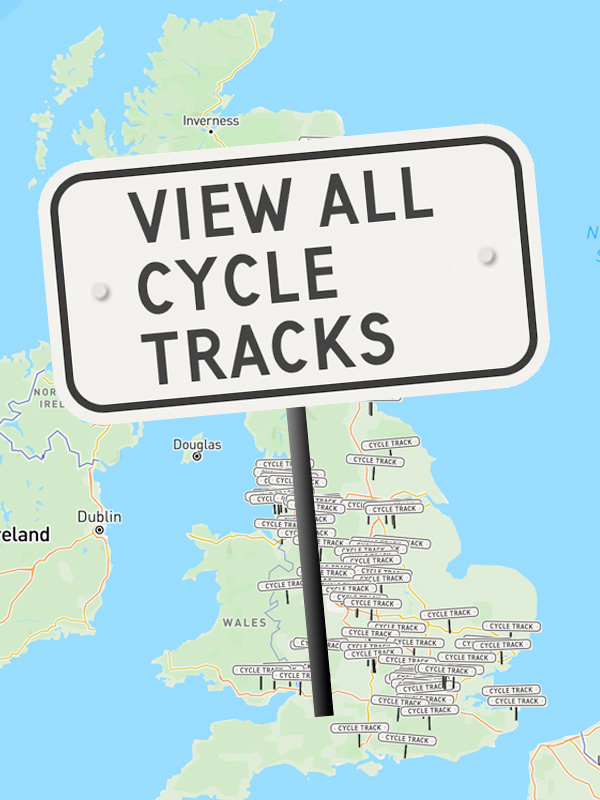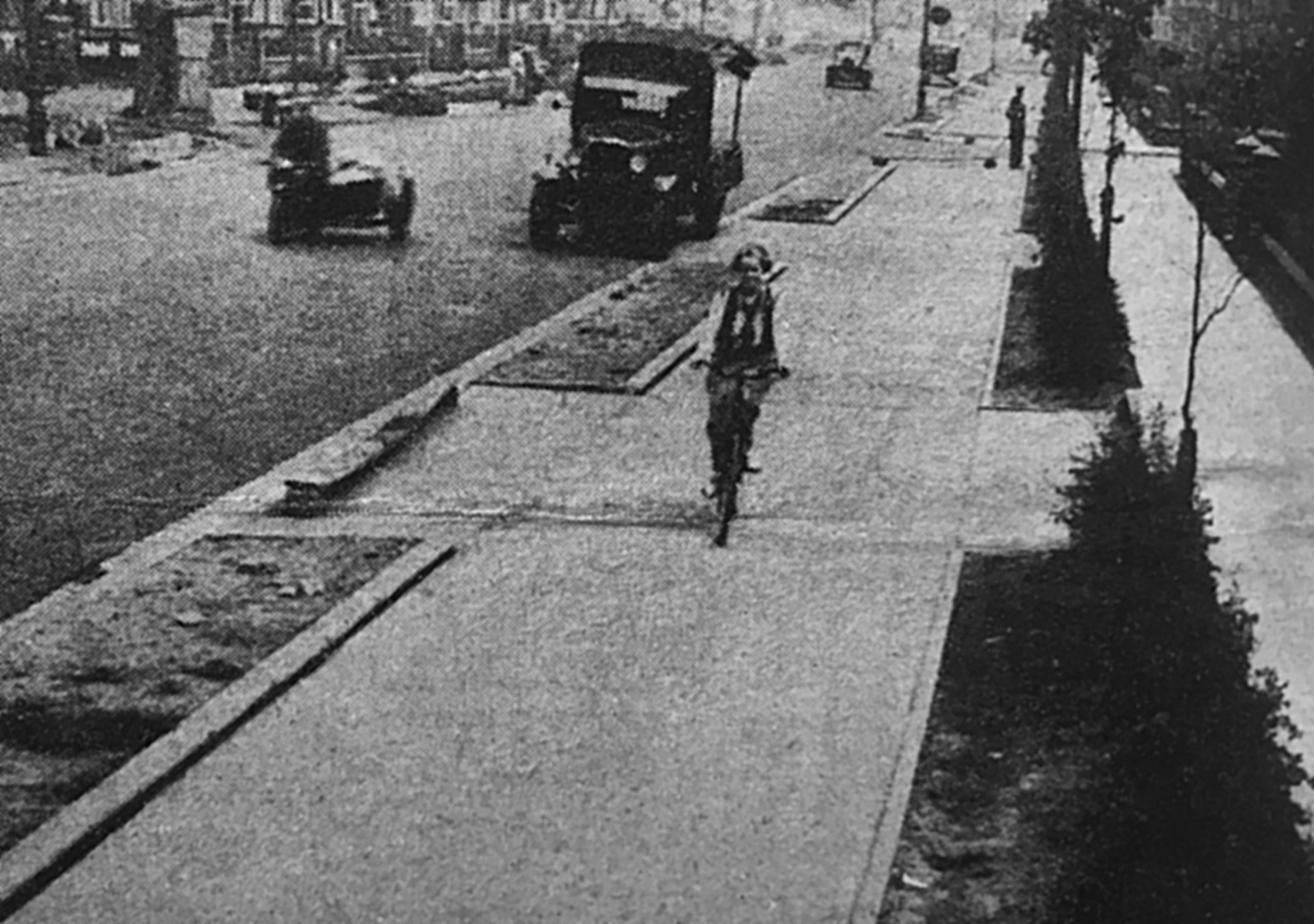
Young woman on Lostock Road cycle track, from Cycling magazine, 1936.
In 1936, Cycling magazine published a photograph of a young woman riding on a wide, concrete-capped cycle track on Lostock Road, Urmston. This dates the creation of the track to before that date.
Plans for the road had been unveiled in January 1934, one month before the Ministry of Transport decided to build an experimental cycle track on London’s Western Avenue. In March of that year, Urmston Urban District Council requested that “instead of 60 feet as required by the Regional Planning Scheme,” the road should be 80 feet across. It’s likely that this addition was to accommodate cycle tracks and footways on both sides of the road.
The Lostock Road cycle tracks linked through to the later cycle tracks on Barton Road, see BARTON ROAD, URMSTON, MANCHESTER.
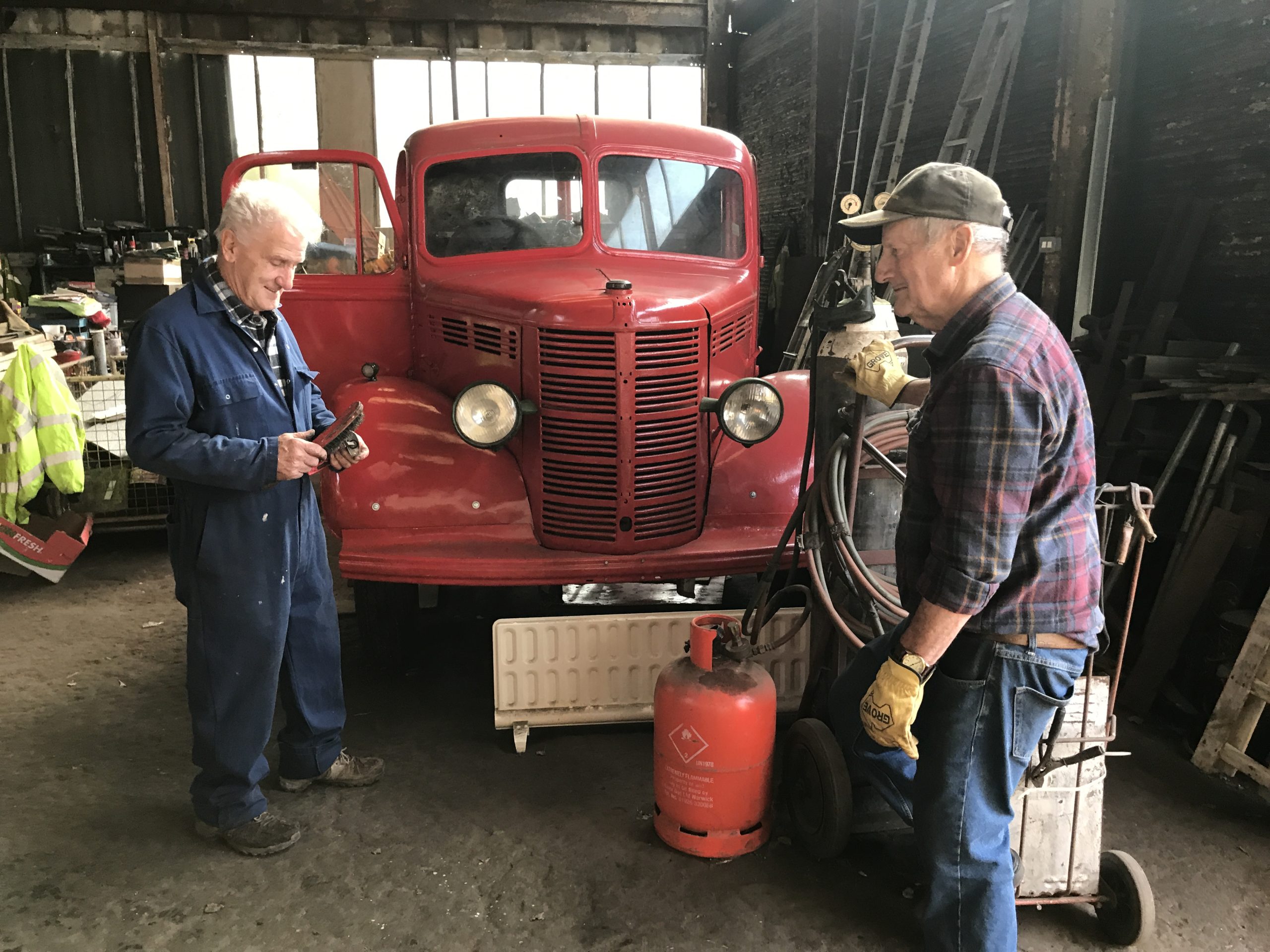
Brothers Harry and George Sanders
Both sets of cycle tracks were surfaced with pink concrete, and later resurfaced with red asphalt, some of which can seen poking through the more modern black asphalt. While I was on a site visit to Lostock Road I got chatting to a local man who told me I should speak to brothers who have lived by the road all of their long lives, and who would know who built the cycle track. And they did – it was Albert Locke, an Urmston property developer, said 75-year-old Harry Sanders.
Harry and his older brother George were born in the house that’s still on their business premises in Urmston (they hire out plant and machinery).
In 1941, the presence of the cycle track was newsworthy enough to place in a newspaper house ad. 146 Lostock Road was advertised as “MOD. SEMI” with “3 beds, lounge, dining-room, kitchenette, bath shower; brick garage; greenhouse attached.” The advert said it also had a “well-laid-out garden” and was situated on a “mn road” with “cycle path front.” The house, concluded the ad, was a “gift” at £570.
The houses, roads, shops and other buildings of Urmston were the work of Ernest Leonard Leeming, the council’s town engineer and surveyor from 1933 until his retirement in 1954. Leeming had a fixation with concrete: buildings, seating and even road signs were made from concrete; many are still in situ.
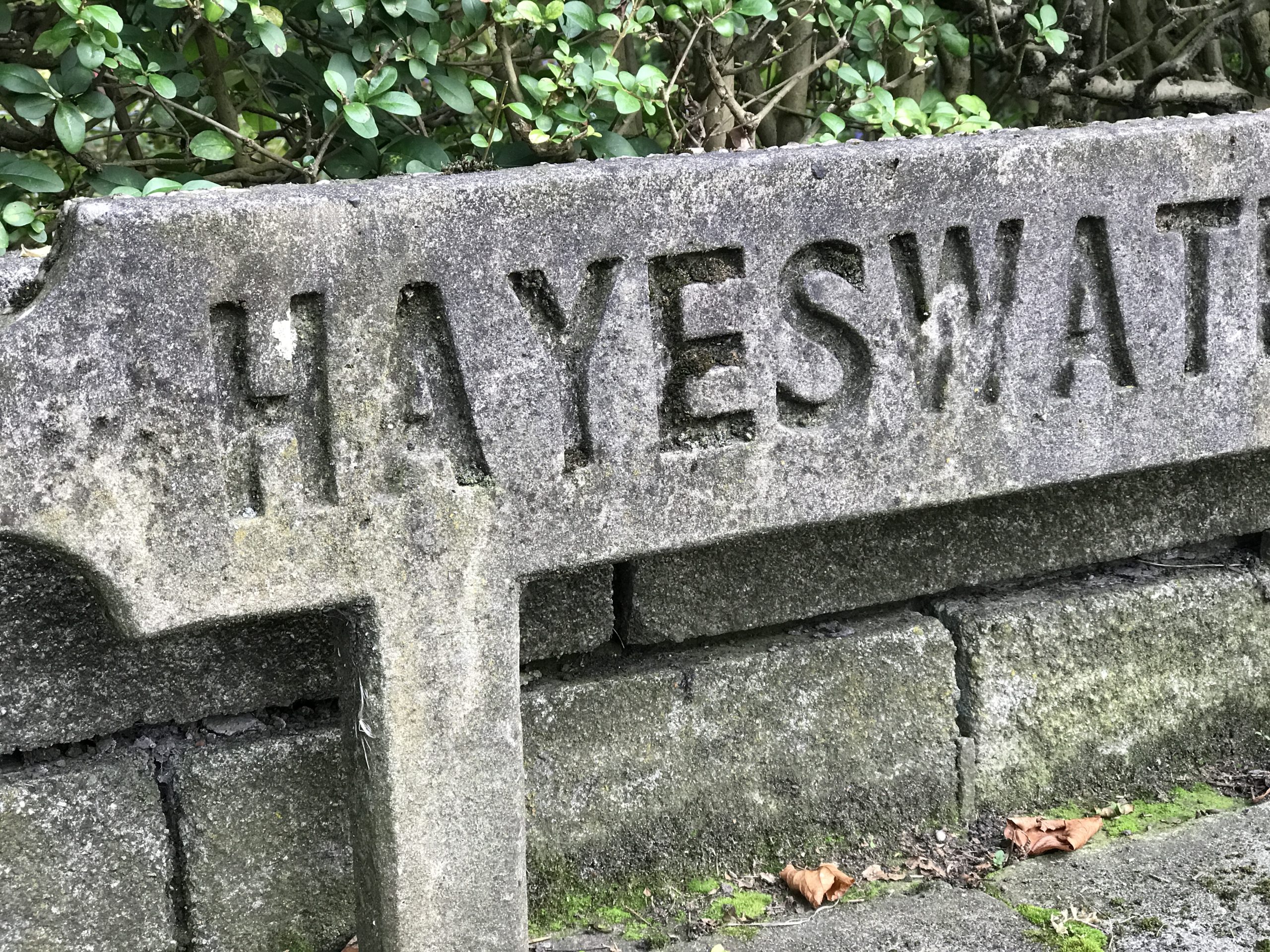
Ernest Leeming had a fixation for concrete — even for road signs.
Leeming also had a fixation with what would become, in part, the M1 motorway. In 1936 he lobbied parliament for a major motor road from London to Edinburgh that would “render unnecessary a great many of the contemplated by-passes, widenings, and cycle tracks for the existing trunk thoroughfares.” This “great highway” should be a Royal Road, he said, “a memorial to the late King.” A year later and he added a cycle track to his “National Road Scheme.”
“It should be the first great motor-way to be built in Britain,” he declared, and it ought to be built with “one wide cycle track, well protected by hedges” that “would probably make cyclists jealous and even autocratic in their regard for it.”
War prevented the building of any such “400-mile super-motor road through Britain” but, by the end of the conflict, Leeming was advocating for such a road again although by this time he had dropped the Royal designation and suggested it ought to be now called the “Churchill Highway,” and that it ought to be built by German prisoners of war.
“Work could be begun immediately,” offered Leeming in May 1945.
“America built the Alaskan highway in about six months. At a modest estimate, and with an early start, Mr. Churchill would be able to enjoy a trip in 1946 along this proposed National highway built to honour him,” he added.
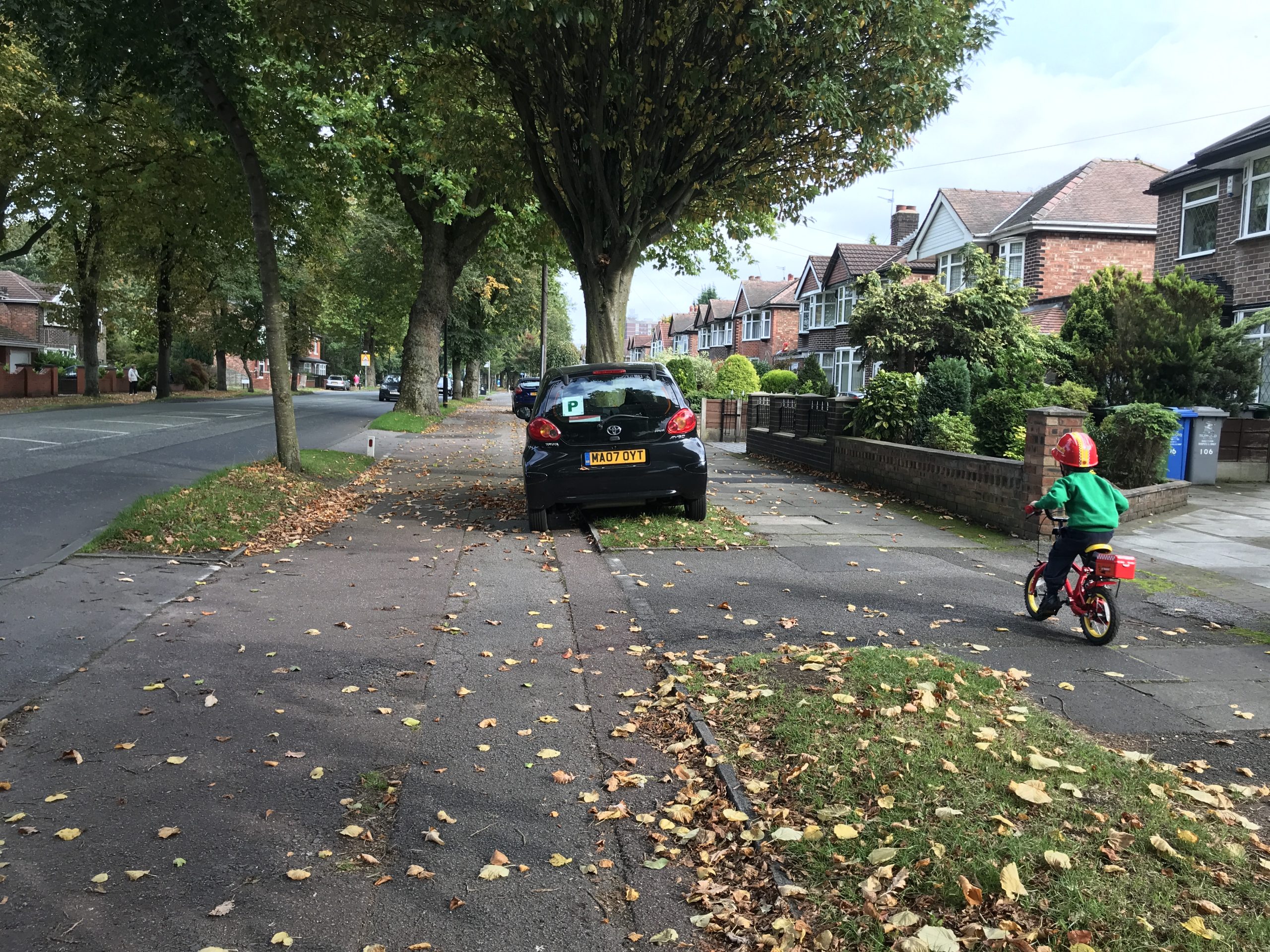
Child cycling on the footway rather than Lostock Road’s period cycle track.
Leeming’s Lostock Road might have been equipped with cycle tracks but the post-war growth in motoring made them anachronistic.
Nevertheless, they continued to be used, albeit sparingly, and some cyclists remember that, in the 1970s and 1980s, the cycle tracks still had priority over side roads. A faded “give way” line on Romley Road is a remnant of this priority and it can still be seen on Google Street View.
It’s possible that this priority was period. A 1936 report in The Guardian said of the Urmston track:
“It will probably be made compulsory for side-road traffic to stop at the cycle tracks before crossing into the main road.”
The utility of the Lostock Road cycle tracks have been much reduced over the years by the parking of cars on them by residents.
In 1987 Urmston borough council tried to stop cars parking on one side of the cycle track with a “Restriction of Use of Cycle Track” order. Clearly, this did not work because the tracks are still used as linear car parks. A recent attempt to prevent this use was reversed within months.
A September 2020 proposal from OneTrafford stated: “Historically, two cycle tracks have been provided along Lostock Road, one on each side of the road.”
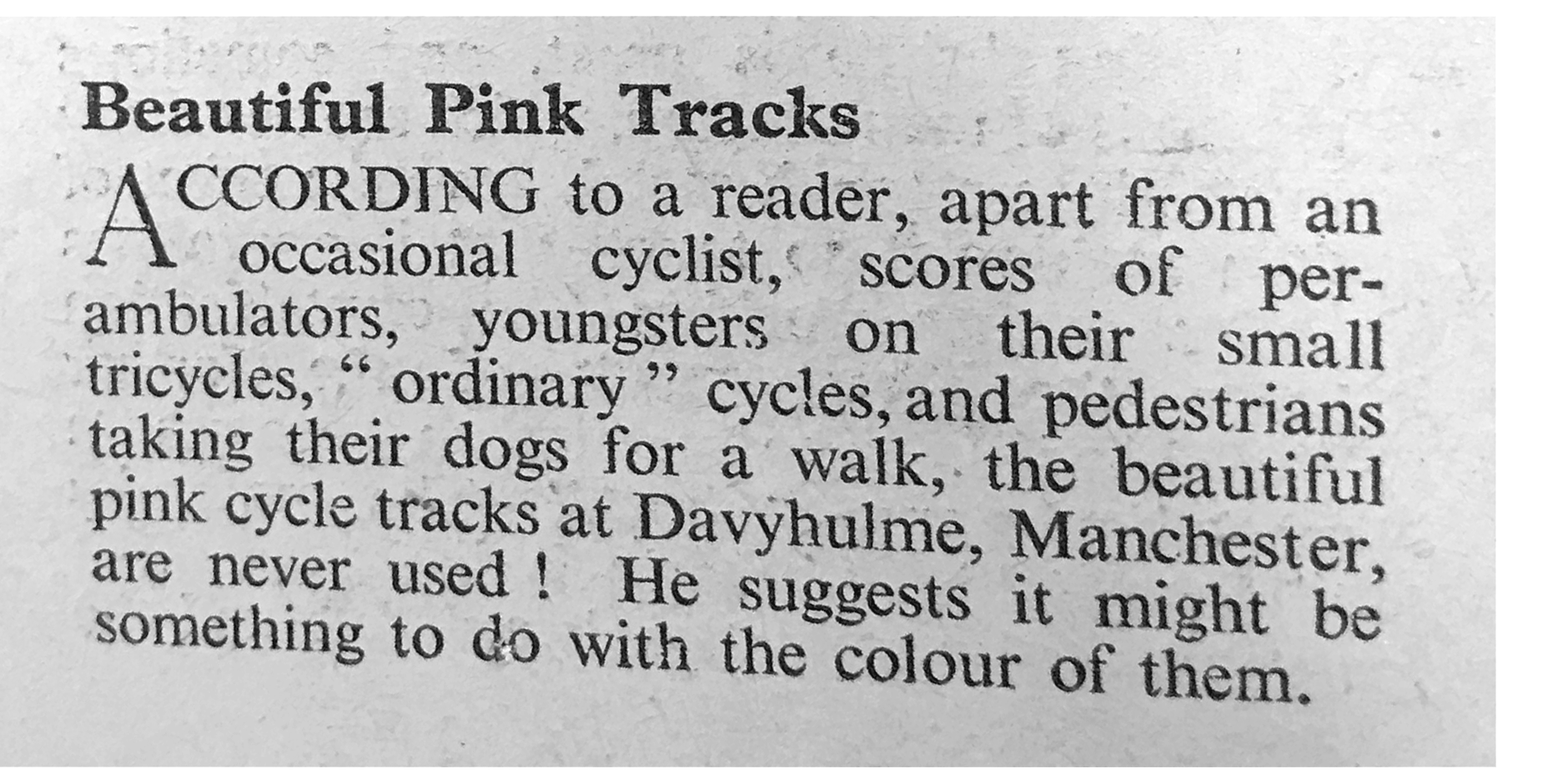
From The Cyclist, October 1936.
“However,” continued the proposal, “at this location the existing tracks are also used by local residents and their visitors as an informal parking area, which creates a hazard to cyclists using the tracks … Installing bollards along the two cycle tracks would provide clearly defined segregated cycle facilities on both sides of the road which could be used without risk of coming into conflict with a parked vehicle.”
Protests from residents of Lostock Road started shortly after the installation of the (plastic) bollards and the local authority swiftly removed them.
The latest plan for the road states that a “protected cycle route on Lostock Road to be permanently retained in one direction.”
Bollards are “to be placed along one side of Lostock Road to prevent obstruction of the cycling route.”
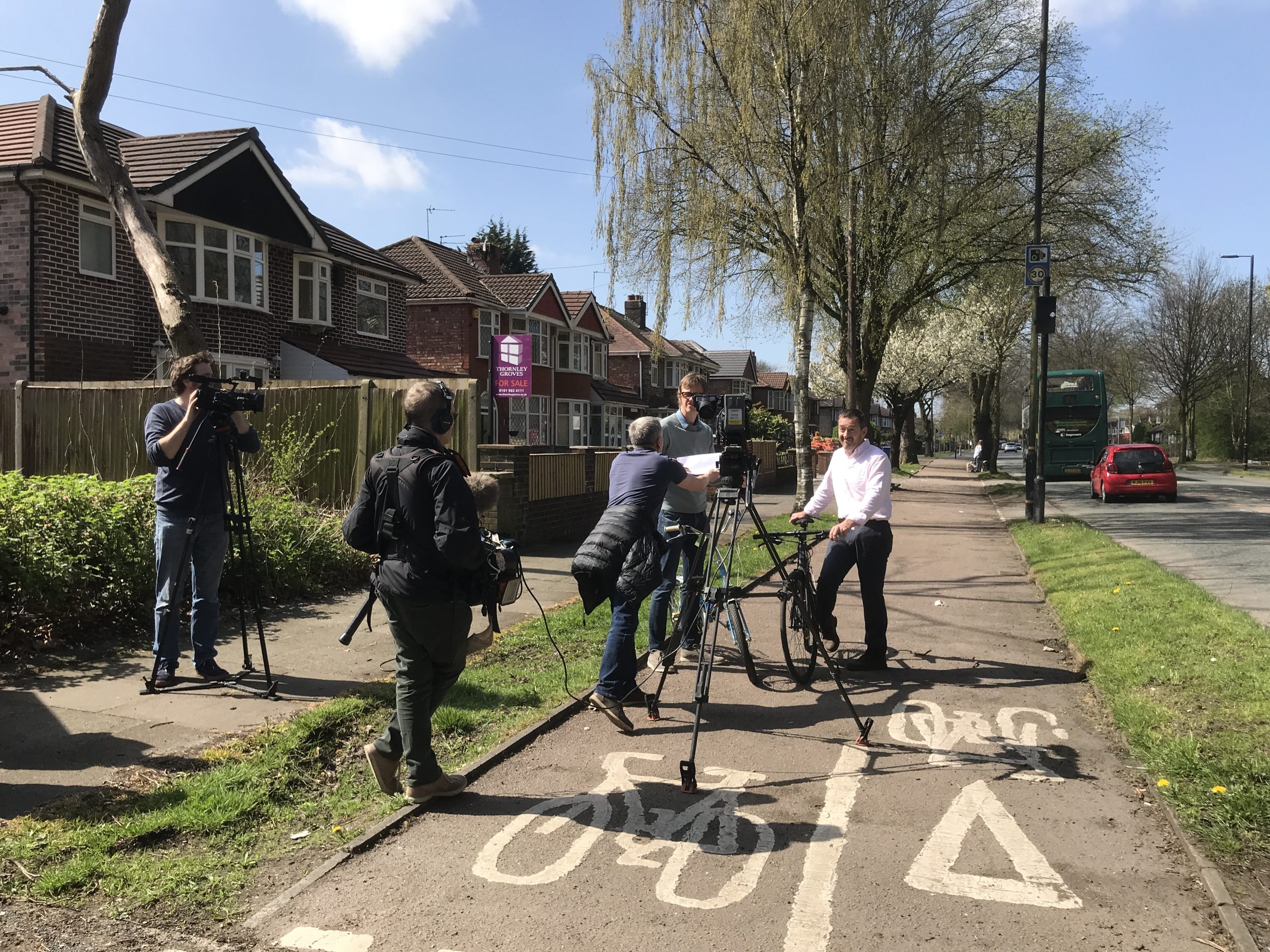
Chris Boardman — then Manchester’s cycling and walking commissioner — being interviewed on Lostock Road about 1930s cycle tracks for BBC’s One Show.






